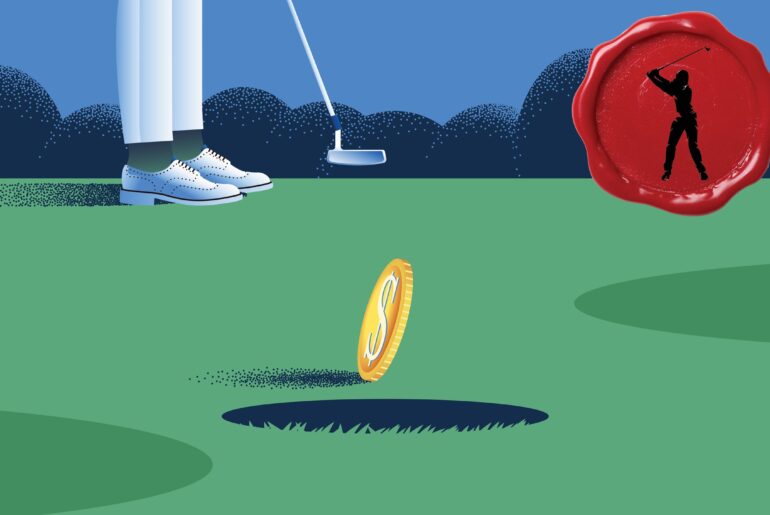Scottie Scheffler is the current World No.1 and dominates the PGA Tour stats in a number of Strokes Gained categories.
Not only does he lead SG: Total, but also Tee-to-Green, Off-the-Tee and Approach-the-Green so, essentially, every long game category on the world’s top circuit.

(Image credit: Getty Images)
There are a number of reasons for Scheffler’s success when it comes to ball striking. Obviously, the 29-year-old’s relentless work ethic is one, but another is down to the equipment the American has in the golf bag.
You may like
A TaylorMade staffer, Scheffler signed a multi-year contract extension with the brand in 2024 and, since then, has racked up four Major championships, as well as 17 PGA Tour wins and an Olympic gold medal.
Using a full TaylorMade bag, the World No.1’s specs in the driver stand at an 8° (set at 7.5°) TaylorMade Qi10 ‘dot’ head, with a Fujikura Ventus Black 7 X shaft. The length of the driver is 45″ cut, with a D4 swing weight.
This set-up, which also features a Golf Pride Tour Velvet 58 Rib grip, has led to Scheffler leading Strokes Gained categories for a number of years. However, there are certain aspects of his driver that are completely different to the standard Qi10s.
Adrian Rietveld Reveals Scottie Scheffler’s Bag Secrets & Our Day At The Kingdom! | Kick Point Golf – YouTube

Watch On
In an exclusive with Golf Monthly’s Kick Point Show, TaylorMade’s Tour Senior Manager Adrian Rietveld, who actually fitted and built Scheffler’s clubs, explained just some of the unique features that the World No.1’s driver possesses.
Brighter Clubface

(Image credit: Getty Images)
As you can tell from the images above, the first difference is in terms of the color of the clubface, which is significantly brighter in the head of Scheffler’s.
Since the TaylorMade Stealth was introduced, the brand have implemented colored carbon faces with red on the Stealth and Stealth 2, and a navy blue face on the Qi10.
Like Rory McIlroy, Scheffler has continued to use the Qi10 Dot and, according to Rietveld, the reason for the brighter coloring is down to the fact that Scheffler “likes the face to pop.”
“The exact loft is 7.5° so, for him, it was more about the transition from Stealth 2 into Qi10, specifically making it smooth from a visual standpoint.”

(Image credit: Getty Images)
Another key difference is in the lack of topline on Scheffler’s driver.
All Qi10 models that are sold by retailers feature a bright, white line; however, in the World No.1’s model, this has been removed because Scheffler wanted it to go straight from black to blue.
Rietveld added: “You could say it’s about the brightness of the face, but he doesn’t have a topline on the driver, which is different to all of our drivers.
“When talking about the face, he likes to see as much of it as he can and that helps him at that low loft. It’s set between 7.5° to 7.75° and you can head-sort to get that within the tolerance, so he can have that exact loft that he’s always played and looked at.”
No Hot Melt
For those that don’t know, hot melt is a heated glue typically placed inside a hollow clubhead to help change the weight distribution on the clubhead as well as the sound and feel characteristics.
Previously, lead tape was used and, sometimes, still is. However, with the advancement of hot melt, it means it doesn’t alter the look of the club.
The majority of professionals use hot melt in their drivers but, in terms of Scheffler, he doesn’t, with Rietveld stating: “This is what is unique about him, he doesn’t like any hot melt in the driver.
“When it comes to the driver, aside from the face, it’s pretty much exactly what we would be selling in the shop.”
Heavy Weighting

(Image credit: Getty Images)
One way in which Scheffler’s drive does differ, though, is the weight of the clubhead. “The key thing about the head is that it’s a 203-gram head-weight, which is pretty heavy,” explains Rietveld
“If there was a standard out there you would be looking around 195 – 197g. For him, at 203g, it’s quite hard to build a driver without no hot melt in. What he has got is a 24g weight in the back (of the head), where the standard is 18-gram, so it’s a little heavier back weight.
“Then, in order to hit that 203 exact, we’ve got a titanium screw in the front that weighs a gram less than a steel screw… (it’s) A very back-CG (Center of Gravity) driver. Very forgiving and has to move left-to-right, predominantly.”
DRIVER TRAVELS
At the PGA Championship, which Scheffler won by a convincing five strokes, the American was forced into a driver change just a day out from the championship, as his driver came back as non-conforming.
McIlroy endured a similar incident but, in Scheffler’s world, he had planned for such an eventuality, breaking in a new driver as his old one became close to non-conforming.
“If you’re a professional of a high standard, hitting a high 170 ball speed and you’ve had your driver for over a year, you’re going to work towards your next driver, or your next options of driver,” stated Rietveld.

(Image credit: Getty Images)
“For Scottie, it was a couple of hours at Quail Hollow and nine holes on the golf course, but that was the cherry on top of two weeks pretty robust work.
“He would have had four (drivers) to choose from. That’s what you do. In some aspects you’re trying to find performance, in some certain aspects you’re trying to find the same. When the time comes, and the circumstances change, he will go with what he feels is right.
“I would say he is more prepared than anyone I could think of in that regard.”







